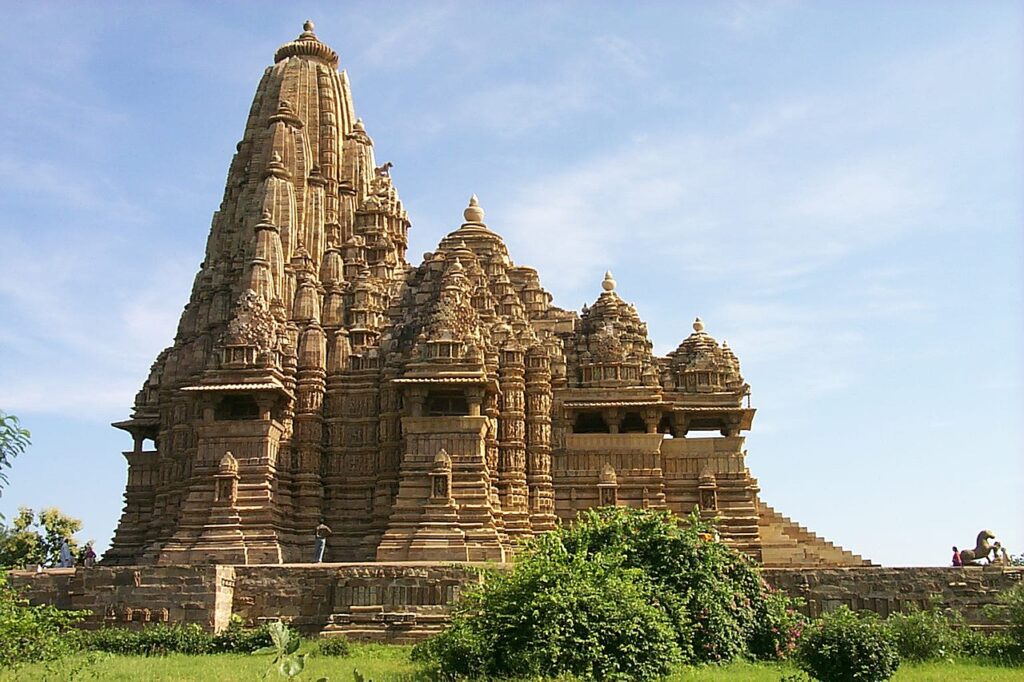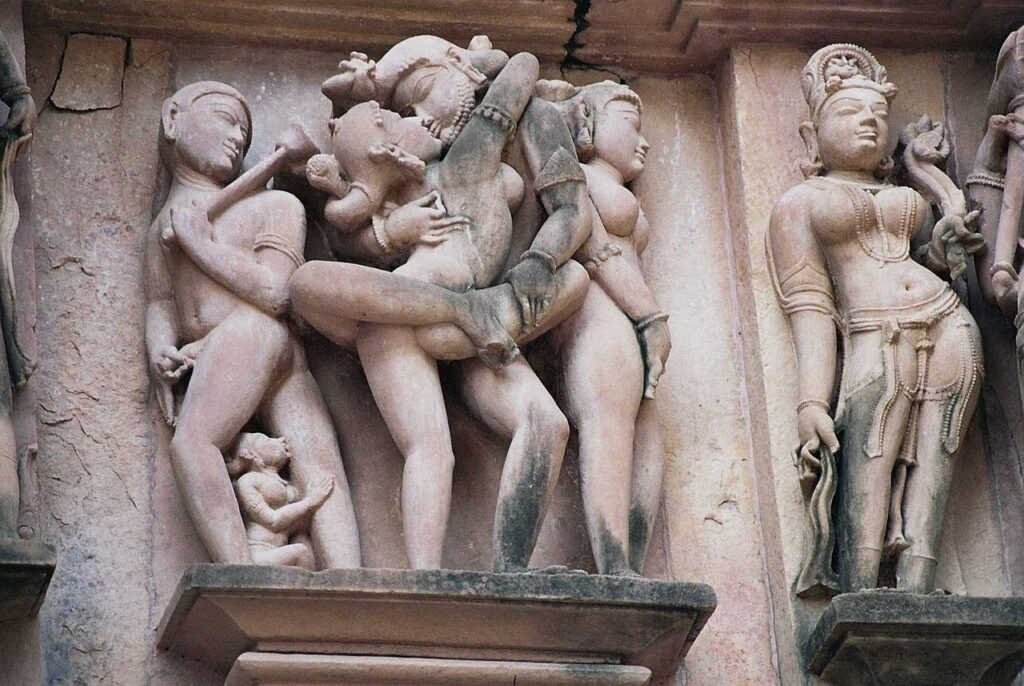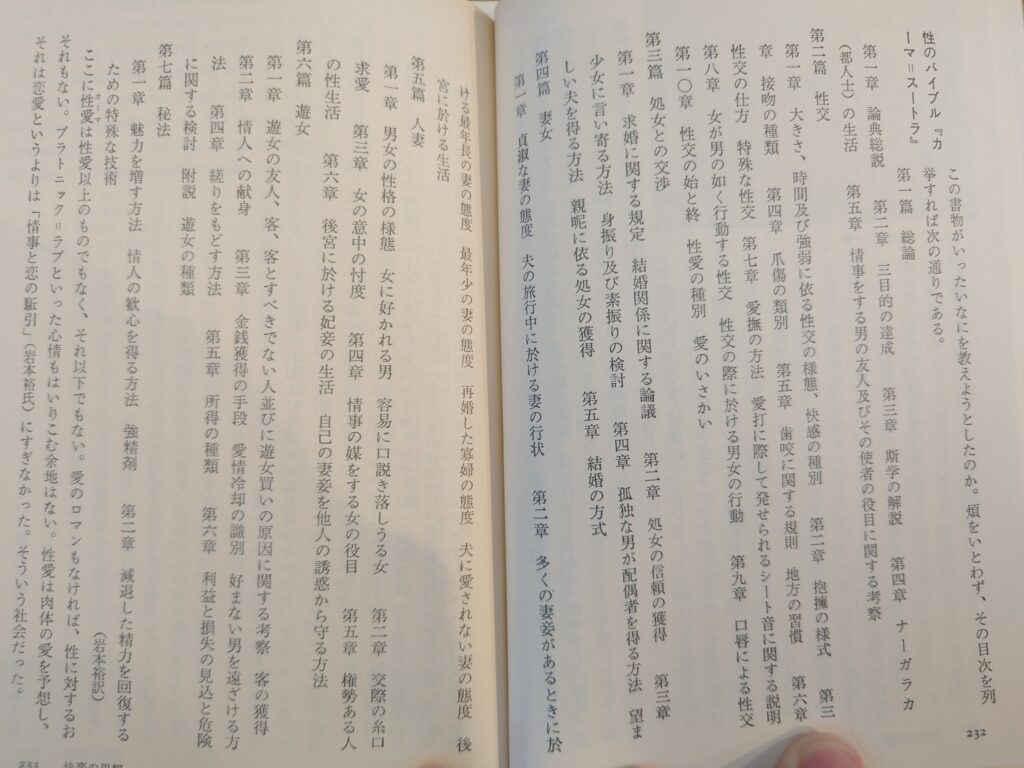Overview and Comments on "Kama Sutra" - Ancient Indian code of sexual love. Also deeply related to Khajuraho temples, Tantrism and Esoteric Buddhism.
Introduced here is the complete translation of Kama Sutra, translated by Yutaka Iwamoto, published by Heibonsha in 1998.
Let's take a quick look at the book.
How gentle must a man be in order to seduce a woman? How can a man gratify a woman to satisfy his lust? This is the ancient Indian scripture of love (kama), which explains the secret games of sexual love and discusses the practical philosophy of love.
HeibonshaProducts Page.


It was Khajuraho, India, that inspired me to read the Kama Sutra. It is a Hindu temple, and yet it is filled with sexually explicit carvings. But don't just dismiss them as "sexually suggestive"; the issue of sexuality in religion has a great deal of importance. Moreover, this is not just a story within Hinduism, but Buddhism also absorbed Hindu ideas, leading to tantrism and esoteric Buddhism, and these ideas and practices related to sex emerged.
This was written about by Sadakata Chen, whom I introduced in my last article.A Theory of Indian Sexual Culture."It was. In the book, the author states
Buddhism is considered to be a rigid and serious religion. However, it is not impossible to find erotic, gross, and sadistic elements in the vast amount of Buddhist literature. (omitted).
I am now trying to show the back roads of Buddhism. Some Buddhist scholars may not like this. However, what can we understand about Buddhism if we avoid the issue of sexuality, which is very important for human beings? In India, sexual love (karma) is one of the three major goals of life. I believe that the significance of Buddhism can be properly understood only when all aspects of human beings are known.
Shunju-sha, Sadakata Chen, Indian Sexual Culture, p. 1-6.
Also, Noboru Karashima and Yasuaki Nara, previously featured on this blog.A World History of Life 5: Faces of India."But it is also preached as follows
Hindus approve of direct sexuality, and openly. The celebration of sexuality is a feature of ancient societies, large and small, but in India there was even less prejudice against sexuality than there is today. This is evidenced by the fact that kama is listed as one of the three purposes of life, along with dharma (religion) and artha (wealth). Direct sexual love was frankly and cheerfully discussed, and this can be seen in literature and art.
Kawade Shobo Shinsha, Noboru Karashima and Yasuaki Nara, A Global History of Life 5: The Face of India, P234
In other words, kama (sexual love and enjoyment) was one of the three major goals of life in India. There was no "vulgarity" that modern people might feel. This is the world in which Indians lived, and Buddhism lived at the same time. Although Buddhist scriptures often consider sex as a taboo subject and do not often describe the reality of sexuality, it is not that they were unaffected by it. In this sense, I picked up this book thinking that reading "Kama Sutra" would be a great reference to understand the Indian society of that time.
Now let us look at the translator's commentary on this "Kama Sutra".
The name "Kama Sutra" is well known. In Japan, even among educated people, the Kama Sutra has been touted as a masterpiece of erotic literature, while the Indian literature is generally dismissed as a stench of incense. However, the truth is that the true content of the Kama Sutra has remained largely unknown. Its academic significance and traditions were completely blank, and these points were not given any consideration. (The following is a brief summary of the situation.)
The "Kama Sutra," as its name implies, is a sutra, a set of guidelines or rules to be followed by the people of the world. Therefore, since its purpose is to teach what it teaches, we should not use this book as a guide or a standard to be followed by the people of the world.perplexityThe first thing that surprises me is that the style of the text is written in a consistent, dry, textbook-like tone from beginning to end. The original text is simple and unambiguous. However, as in other scriptures, the text is classified and defined with the same diligence and pedantry that is characteristic of the Indians. The cumbersomeness and absurdity of the classifications are such as to make the reader's eyes glaze over.cover (e.g. of snow, trees, etc.)There is nothing to make us believe that the work is not a work of art. There is even a glimpse of a literary flavor to it. First of all, however, we must note that this book has a special significance in the history of Indian culture as one of the academic works cultivated by the Indians. In addition, the numerous social articles that can be found in the book, in which the author explains the secret games of sexual love and discusses the practical philosophy of love, provide us with valuable materials for the history of Indian culture. We must first acknowledge the significance and value of this book. We must not forget, however, that this book was the first-rate book of culture for the ancient Indians.
Heibonsha, Yutaka Iwamoto translation, Complete Translation of Kama Sutra, p. 5-6
As mentioned here, the Kama Sutra is often seen as a bellicose document about sexuality, but in fact it is not that full of explicit sexual expressions.A World History of Life 5: Faces of India."The chapter layout of the "Kama Sutra" was compiled in the "Kama Sutra" and is presented in the images below.

While there are indeed many references to sexual intercourse, I also noticed that the overwhelming majority of the text is devoted to rules and descriptions of the lives of men and women. The translator's comment, "The numerous social articles scattered throughout the book, in which he explains the secret games of sexual love and discusses the practical philosophy of love, provide us with valuable material for the history of Indian culture.
What I found when I actually read the Kama Sutra was that it was very similar to the so-called modern love instructions.
I was surprised at how many very familiar topics kept coming up, such as "what kind of men are popular," "how to attract men," and "how to befriend and seduce the women you are interested in. I couldn't help but laugh when I read passages such as "How to keep away a man you don't like who comes on to you" and "How to cheer up a man who has no energy. It was as if I could picture the situation between men and women at that time. It is definitely a first-class material that gives us a glimpse into the culture and lifestyle of that time.
As I mentioned earlier, the Kama Sutra is not just a lustful piece of literature. Although it is often misunderstood as being full of explicit sexual expressions, it is only one part of the life between a man and a woman. The Kama Sutra is about the encounter between a man and a woman, and their life together as a whole. When I read this code, I was surprised to find that it is full of rules for life between men and women.
previously introduced.Manu Code."The Hindu world was also a very strictly regimented world, with norms for all aspects of life. In this light, the Hindu world had a fairly strict code of conduct and beliefs for all aspects of daily life. Of course, not everything was strictly adhered to, just as there is a true and false side to life. However, I believe that Hinduism was imbued into every corner of their lives.
And that Buddhism also coexisted in such a world. I think this is an extremely important perspective. Buddhism had a policy of not intervening in the daily lives of its followers. In other words, Buddhists also lived according to the teachings of the Hindu world. This is similar to how the Japanese live with various religious traditions. This is precisely theA World History of Life 5: Faces of India."Written by Yasuaki NaraA History of Indian Buddhism as Culture.It is also preached in the
In that sense, it was very interesting to read this book, Kama Sutra.
This is "The 'Kama Sutra' - Ancient Indian Code of Sexual Love. It is also deeply related to Khajuraho temples, tantrism and esoteric Buddhism",
Next Article.
Click here to read the previous article.
Related Articles





































